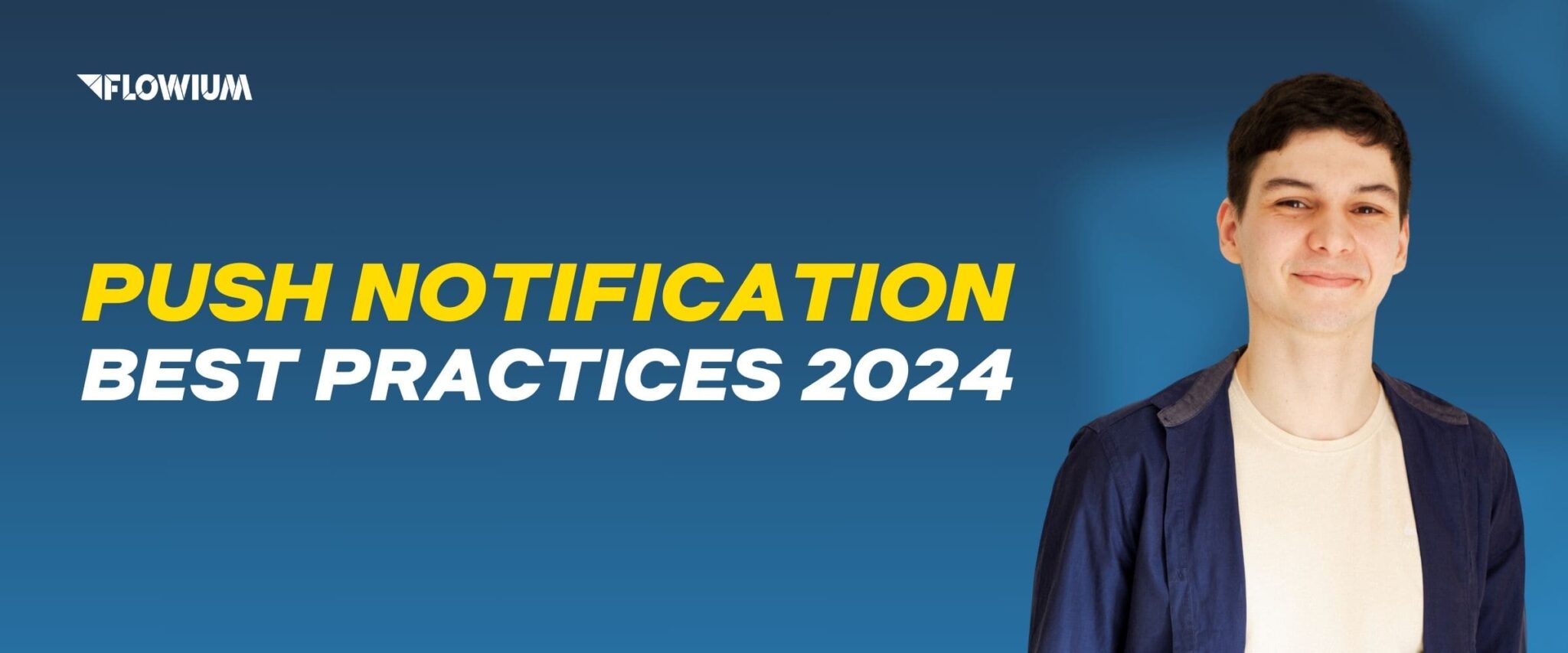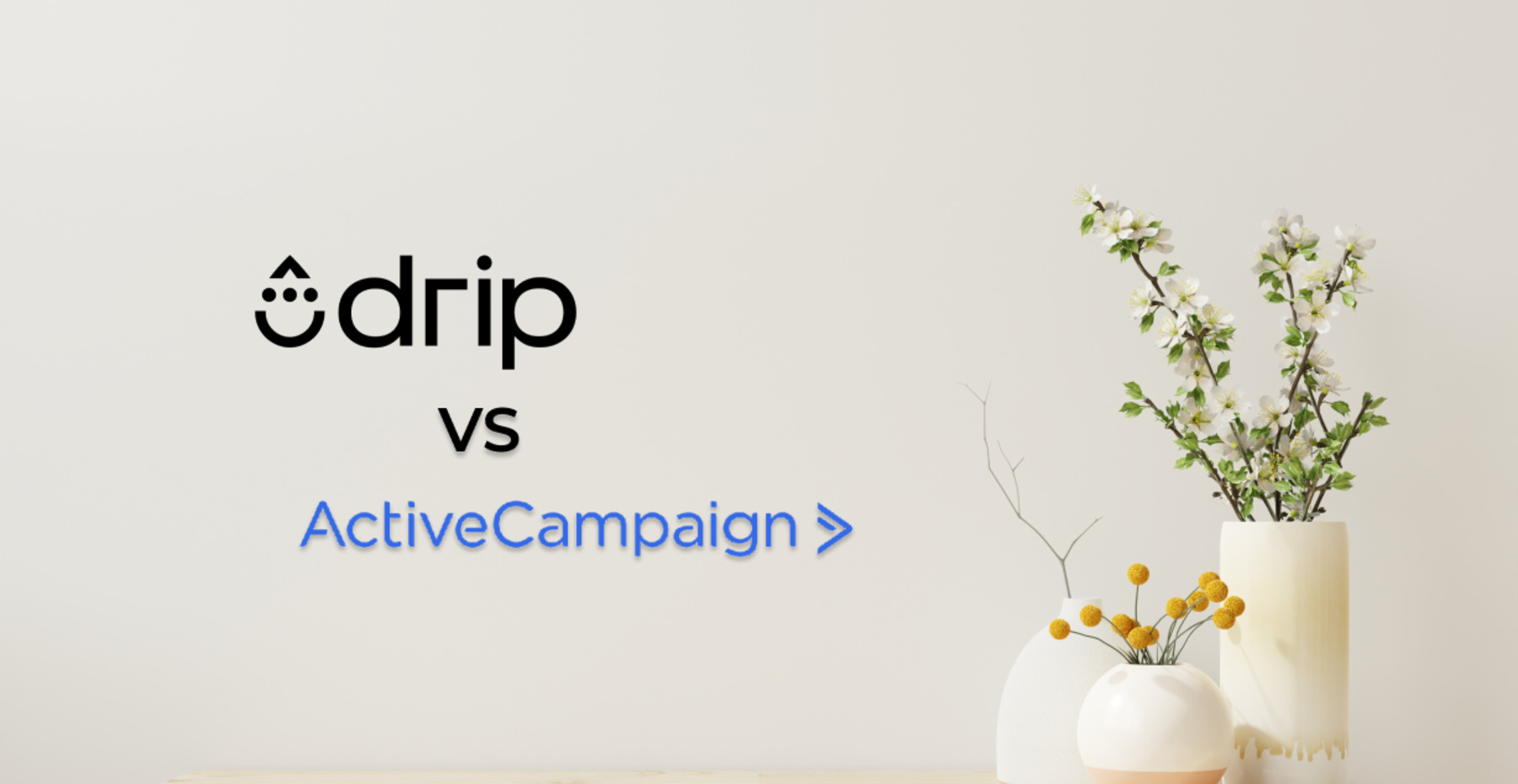Do you know that you don’t need to wait for your clients to open their inboxes to read your messages? With the power of push notifications, your updates and announcements will appear on screens of their devices in real time even if your app or website is inactive. Professional marketers have already been using this strategy to connect with the audience and grow engagement.
How to organize this real time communication correctly, though? In this brief guide, we gathered the best practices for push notifications promotions. Read ahead to find out what strategies and methods experts use.
Push Notification Marketing in 2024
Ever since businesses started creating their branded websites and mobile applications, direct and timely communication with clients has been handled through various digital channels, including push alerts. If allowed, this type of messages and promotions enables you to deliver information quicker, compared to others, since they’re displayed directly on notifications bars of clients’ devices. This makes the channel favorable for marketers and useful for promotions.
Therefore, push notification marketing in 2024, which sends customized messages to consumers’ mobile and web devices, is still essential for improving engagement, retention, and conversions. The statistics prove that the popularity of this channel, especially for ecommerce and retail businesses, will not fall out.
- With push notification marketing, opt-in rates hover around 60% on average, with Android users opting in at greater rates (75%) than iOS users (50%).
- An average engagement rate of 7% across the industry, with 20% for highly customized alerts.
- Push notifications have a significant impact on retention; after 90 days, users who have opted in 88% more likely to interact with the app.
- Potential increase of conversion rates by up to 30% when alerts are properly timed and customized.
- A well-thought push notification strategy can raise revenue for organizations by 25%.
Benefits of Push Notifications Marketing
Organizations can harvest substantial benefits from opting for push notifications marketing.
- Generating high-quality leads
For your clients and prospects to receive push alerts, you need to get their permission. If they allow receiving messages from your website or application, it mostly means that they’re interested in your updates and offers. Interest in your brand and intention to engage signify the quality of your leads. The better their quality, the more chances of them turning into retaining customers.
- Immediate communication
Push alerts provide messages to a user’s device directly, guaranteeing immediate visibility. This is excellent for updates or deals that expire soon.
- Growing return traffic
Push alerts are a good countermeasure to browse and cart abandonment. They just don’t let visitors forget about your website and products they viewed or might be interested in. You can include the direct link to the viewed pages or carts to return them to your site and encourage finalizing their purchase or other actions.
- Enhanced user experience
If you send personalized, well-timed, and useful notifications, it’ll only improve the experience of users with your application or website. Push notifications can assist in guiding customers through every step of their interaction with your business, including opt-in, announcements of sales, receipt distribution, and shipment updates.
- Cross-platform reach
You can connect with a wider audience across devices and a variety of platforms, including websites and mobile apps.
- Real-time analytics for optimization
Along with real-time messaging, push notification marketing gives marketers the ability to receive real-time analytics. This allows to monitor user behavior, open rates, and delivery to optimize marketing campaigns and make adjustments on the go.
- Learning about clientele
Advanced analytics of your push notification campaigns also allows finding out more about your audience, their preferences and activities on your apps and sites. You can use the gathered data for further personalization and segmentation.
Push Notifications Best Practices
Achieving success in this type of marketing is possible only if you use the best practices for push notifications in your approach. We prepared a list of top methods and recommendations that you can apply to your strategy.
Enabled Push Notifications
No design style, perfect copy, or thought-out strategy will allow you to achieve your goals, if your users don’t have push notifications enabled. Many businesses make a common mistake of rushing to send a default permissions request as soon as users set up their app. Aside from situations when they allow it unintentionally, most times users decline or ignore this opt-in. Why? Because they don’t know yet what to expect from your app and your brand. The best push notifications strategy here is to give it some time—for users to decide on their experience, and for you to build some sort of connection with the client. With the established trust and knowledge that you won’t take advantage of permissions, it’s easier for clients to decide on allowing push alerts. Request permission to send notifications only after users have benefited from the app, as this usually increases the rate at which users opt-in.
💡Key Takeaway: Avoid default permission requests. Build connection with clients before sending the opt-in with optimal timing.
Optimization of Opt-ins
The format and content of your notifications influences the desire of clients to opt-in. Communicate the benefits customers will receive—like exclusive discounts or access to unique information—clearly when they ask for permission in order to maximize push notification opt-ins. To improve acceptance rates, we also recommend utilizing a “pre-permission” system as a part of your push notification marketing strategy to ask users if they are prepared to receive messages prior to the formal system request. If you’re not sure what format would work for your particular customer base, use A/B testing to improve the phrasing, layout, and timing of permission requests.
💡Key Takeaway: Incline users to opt-in before formal permissions request by utilizing pre-permission, clearly stating the incentives of accepting push notifications, and using split testing for format decision.
Actionable Alerts
Another aspect of push notification optimization that we want to emphasize on is calls to action (CTA). The thought behind this push notification best practice is simple—if you want to make your alerts work, make sure users understand what you want them to do. Use clear language for direct and simple CTAs. This way you can improve overall user experience and increase engagement, retention, and opt-in rates.
💡Key Takeaway: Ensure clarity of your CTAs.
Clear KPIs
Start by establishing specific goals and key performance indicators (KPIs) that correspond with your company’s objectives in order to make the most of online or app push notification strategy. Monitor engagement metrics such as open rates, actions performed, and amount of time spent in the app following a notification. Measure the conversion rate or revenue increase associated with push notifications for conversions, and concentrate on retention rates or session frequency for conversions.
💡Key Takeaway: Define clear KPIs to set the objectives of your push campaigns and control their performance.
Audience Segmentation
Just like email marketing needs email list segmentation, it’s one of the push notifications best practices to segment users as well. Choose precise criteria for your audience and divide them in segments to send more personalized messages that will be interesting to receivers. For example, music streaming services often segment listeners by their music genre preferences, so metalheads only receive notifications when rock bands upload new tracks, leaving out other recommendations.
💡Key Takeaway: Segmenting your audience as important for push notification promotions as it’s for other marketing channels.
Push Notifications Calendar
Another best practice for push notifications that we can borrow from email marketing is creating a marketing calendar. Creating an editorial calendar can assist you in planning the frequency of delivery and selecting the best timing to connect with your audience. The calendar needs to include the content planned to be promoted through push notifications, as well as the dates, special occasions and events when you plan to send out your campaigns. Consider carefully whether to deliver push notifications and use them selectively to prevent user negativity or fatigue.
💡Key Takeaway: Create a push alerts promotional calendar to organize communication and your workflow.
Utilization of User Data
Professional marketers always emphasize on the importance of using available client data to direct marketing campaigns. This is also one of the push notification best practices. Gather and evaluate user data in a methodical manner, taking into account their past purchases, in-app activities, interactions with alerts, and demographics, in order to maximize your push notification approach. Based on this information, you can make constant improvements to your approach. Use business intelligence platforms and reporting tools to get meaningful insights and make data-driven choices.
💡Key Takeaway: Make use of available user information (in-app behavior, engagement, purchases, demographic data, etc.) to improve segmentation, personalization, and your promotional strategy in general.
Personalization
Adding elements of personalization to your push alert can bring significant improvements to your campaign performance. The least you can do is to start addressing users by their name. Even this little adjustment can do a trick and draw attention—seeing their name in the notification bar, users can think it’s a message from a friend, and click on it. More advanced push notifications practices include adding specific information, unique deals and offers based on user data analytics.
💡Key Takeaway: Personalize messages, starting from addressing by name to more specific offers based on previous activities and facts about a client.
Testing and Optimization
Use A/B testing to test various send times, content, and audience segments in order to find the ideal push notification strategy and timing. You can continuously improve your plan to increase engagement and performance by evaluating the outcomes.
Key Takeaway: Split testing is a way to go about figuring the best content format and timing for sending notifications.
Cross-channel Push Notifications Strategy
General success of your business promotion depends on a skillful combination of different marketing channels. We at Flowium know how important it is to take an integrated approach, since we combine email and SMS in our services to maximize the benefits for our client ecommerce businesses. To provide a seamless and integrated user experience, web or mobile push notifications should be incorporated into a cogent cross-channel strategy, supporting and enhancing messages sent on other channels (email, SMS, in-app interactions).
Key Takeaway: Combine push notifications with other marketing channels to maximize outreach and capitalize on your promotions.
Best Practices for Push Notifications in Examples
To give you more understanding of how businesses use all the mentioned best practices, let’s look at some examples of good push notifications. It might give you inspiration to invest in this channel and start creating your own notification campaigns.
Best Push Notification Example by HAIRtamin
HAIRtamin’s Halloween promotion from last year is a wonderful example of a good push marketing campaign. Just like with email campaigns, holiday seasons are the best times for promotions to work. That’s why the brand has decided to add push alerts to their strategy to increase engagement and sales from the site.

Push Notification Campaigns from Duolingo
Push notification marketing from Duolingo has already become a famous meme. This is one of the unique push notification strategy examples when a company basically “nags” you with reminders and alerts but the audience finds it funny. It works thanks to the cheeky promotion manner chosen by Duolingo and their branded “bird with attitude”. Forgot your Italian lesson? Here’s a not so gentle reminder from a green owl that will make you open the app and learn.
However, you need to understand that this strategy works for Duolingo only because they’ve put a lot of effort into building their brand through multiple channels to be able to stand out and address their users with a “sassy” humor. Being a little passive-aggressive in notifications from the get-go might not end well for a new brand that doesn’t have the reputation like Duo.

Nike Marketing with Push Notifications
Notifications aren’t always about promotions and sales. There are numerous applications that use behavior-based alerts to simply communicate with users. One of the examples of push alerts that offer insightful information to motivate consumers to reach their fitness objectives are the ones sent by Nike. The company often uses these messages to congratulate visitors on reaching significant milestones or to provide promotions that are relevant to them based on their surfing history. The goal is to provide more value by providing industry- and product-specific insights, advice, and best practices.

Push Notifications Examples from Spotify
Spotify uses push notifications to improve the listening experience for its users and increase user engagement. They mostly send messages that include tailored recommendations for new songs, albums, or playlists depending on the tastes and listening habits of the user.

Ecommerce Push Campaigns from SuperJeweler
This is among the prominent examples of push notifications acting as reminders for cart abandonment. SuperJeweler is reminding the user through an engagement push message that they still need to finish the purchase. To remind clients about the product that caught their interest and encourage finalizing the action, the brand uses photos of the products.

Push Notification Guide FAQ
What’s a push notification?
A push notification is a brief message that shows up as a pop-up from a mobile app on your desktop browser, mobile device’s home screen, or notification center. Push notifications usually include rich media (buttons, graphics) encouraging the user to click on a certain action.
What are the qualities of the best push notifications?
When push alerts are relevant, customized, and useful, they can be considered effective. They provide instant relevance and engagement when they are prompted by a user’s action, location, or intent. Content that is personalized for each user makes the message more relatable. Ultimately, the notification’s efficacy is maximized by providing the user with precise and doable instructions that outline the following steps.
Final Thoughts
Push alerts are a powerful tool that provide a direct channel of connection with the users and clients of many brands. By utilizing analytics and push notifications best practices, expert marketers can create extremely effective means of communication and promotions. They can guarantee significant conversions for both websites and applications, converting new users into devoted ones and establishing successful marketing campaigns.
However, the experience of many businesses shows that this strategy works to its maximum potential only in a combination with other channels, like email marketing. If you want to find more useful information about both channels, read our blog, or you can schedule a consultation with Flowum’s top marketers.







